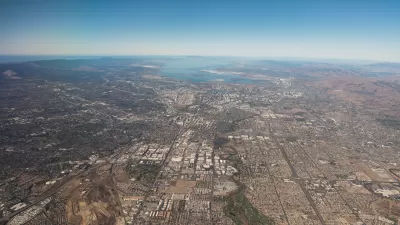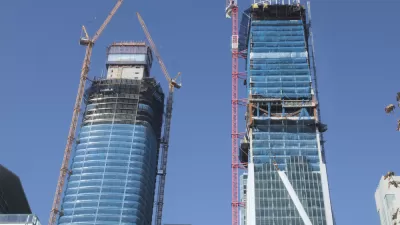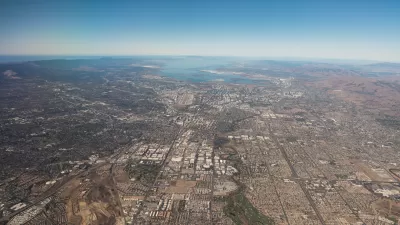Though a handful of recent articles predicted "peak Silicon Valley," new numbers show the region is still producing lots of good jobs and attracting plenty of venture capital.

Last week, Justin Fox at Bloomberg points out, more than one columnist—himself included—predicted the end of Silicon Valley, citing all the things that make it hard to live there: housing costs, tax rates and traffic, not to mention drought, fire, flood and earthquakes.
But, Fox writes, his analysis of new employment numbers released at the beginning of this week show "the opposite of an exodus."
"[M]etro San Jose is back to adding jobs at more than twice the pace of the U.S., and metro San Francisco appears to be bouncing back, too. Among the nation's 50 largest metro areas, San Jose ranked seventh in the rate of job growth from January 2017 through January 2018, and San Francisco was more or less tied for 17th with Houston. The nearby Sacramento metro area came in tenth."
It turns out that predicting the end of Silicon Valley, then debunking the prediction, then making it again, is something of a regular occurrence (Fox has a link to an 18-year-old article along the same lines).
So, though '[t]he argument that Silicon Valley will soon pass its peak may well be right," Fox writes, "I'd be cautious about predicting any kind of precipitous decline."
FULL STORY: Silicon Valley's Demise Has Been Postponed Again

Study: Maui’s Plan to Convert Vacation Rentals to Long-Term Housing Could Cause Nearly $1 Billion Economic Loss
The plan would reduce visitor accommodation by 25,% resulting in 1,900 jobs lost.

North Texas Transit Leaders Tout Benefits of TOD for Growing Region
At a summit focused on transit-oriented development, policymakers discussed how North Texas’ expanded light rail system can serve as a tool for economic growth.

Why Should We Subsidize Public Transportation?
Many public transit agencies face financial stress due to rising costs, declining fare revenue, and declining subsidies. Transit advocates must provide a strong business case for increasing public transit funding.

How to Make US Trains Faster
Changes to boarding platforms and a switch to electric trains could improve U.S. passenger rail service without the added cost of high-speed rail.

Columbia’s Revitalized ‘Loop’ Is a Hub for Local Entrepreneurs
A focus on small businesses is helping a commercial corridor in Columbia, Missouri thrive.

Invasive Insect Threatens Minnesota’s Ash Forests
The Emerald Ash Borer is a rapidly spreading invasive pest threatening Minnesota’s ash trees, and homeowners are encouraged to plant diverse replacement species, avoid moving ash firewood, and monitor for signs of infestation.
Urban Design for Planners 1: Software Tools
This six-course series explores essential urban design concepts using open source software and equips planners with the tools they need to participate fully in the urban design process.
Planning for Universal Design
Learn the tools for implementing Universal Design in planning regulations.
Ascent Environmental
Borough of Carlisle
Institute for Housing and Urban Development Studies (IHS)
City of Grandview
Harvard GSD Executive Education
Toledo-Lucas County Plan Commissions
Salt Lake City
NYU Wagner Graduate School of Public Service




























